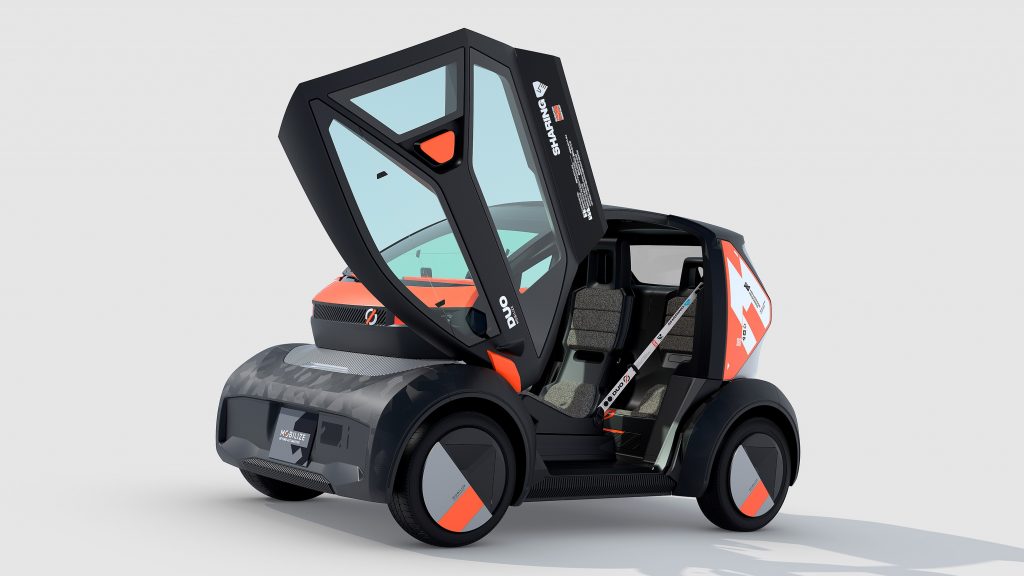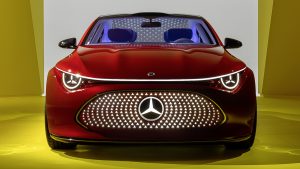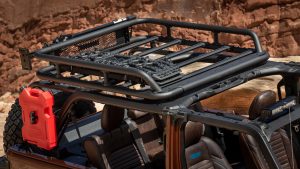Stellantis has revealed the third version of its electric heavy quadricycle. Along with its Citroën and Opel siblings, it aims to strengthen what has become a new trend in Europe

- Retro-styled Fiat Topolino is the latest heavy quadricycle in the European market
- It builds on a trend of microcars developed around a different type of regulations
- We can expect to see more automakers involved in this over the next years
A few days ago, we wrote an article about the Microlino. It is a fully electric quadricycle created by a Swiss startup inspired on the Isetta microcar. Months ago, we wrote about the Duo, another heavy quadricycle produced by Renault’s Mobilize brand. Earlier than that, we did not write about the Citroën Ami because we thought it would be one of a kind. How glad we are that our first thought turned out to be wrong.
The term “heavy quadricycle” exists because of the European law. In short, it refers to a vehicle class which stays below that of regular cars. They have limits of size, payload and performance, but also lighter safety and emission requirements to fulfil. After a long time playing a secondary role in the automotive industry, it seems that things have started to change for them. And they have electrification to thank for that.
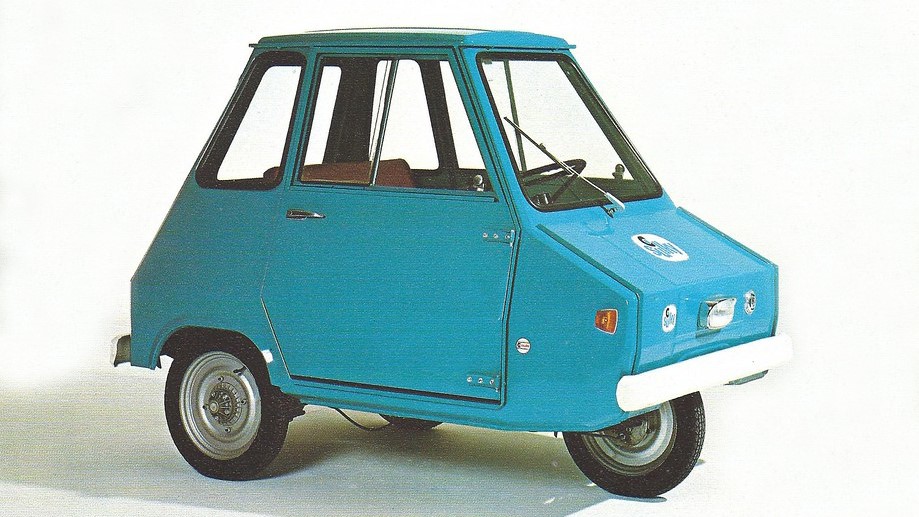
What is a heavy quadricycle?
European law divides light vehicles into several subcategories. The first five regard vehicles with two and three wheels, then L6e and L7e are about quadricycles. The former refers to “light quadricycles”, vehicles which may weigh up to 425 kg, generate up to 6 KW of power, reach 45 kph, and seat up to two people. All things considered, L6e vehicles are primarily designed to transport people and ride on urban streets.
The L7e category has higher limits for all those metrics, so it opens more possibilities. Latest technologies allow manufacturers to offer comfort and safety at a lower cost and with lower weight. Parallel to that, the rise of electrification has made small motors adequate for more applications than ever. Over time, heavy quadricycles have gone from leisure and work use to a field with a much higher sales potential: city use.

Heavy quadricycles vs regular cars
From a technical point of view, they are subjected to looser regulations. They are exempt from emissions, fuel efficiency, performance, and sound insulation tests, to name a few. And they are not required to have so many safety items as modern cars, especially electronic sensors. In fact, some European countries have specific laws to allow teenagers to drive them at age 14, for example, and/or without a driver’s license.
Of course, none of that comes from negligence. Heavy quadricycles have the performance limits we wrote above and can only ride in cities. In short, they would not have the means to actively expose occupants to high risks. Now, the photos above show that they have been around for a long time. You might be asking yourself why they went under the spotlights all of a sudden. This is what we are going to discuss next.

Why are heavy quadricycles interesting?
To paraphrase the Wallpaper Magazine, the recent effort to use electric powertrain in the car industry has focused on high-end models so far. Most pure EVs are large sedans, pickup trucks and SUVs, while lesser categories make do with hybrid layouts. As a result, the progress in terms of carbon dioxide emissions is happening more slowly than expected. But, sadly, that is not the only problem we have in this context.
As mentioned above, safety and emission standards for cars are getting tougher by the year. That implies giving them more items as standard, and that comes at a cost. That is a problem especially among cheap cars because they are more constrained in terms of price. Their profit margins are low from the beginning and any price hike will drive buyers away. Compact hatchbacks, for example, are in danger of extinction.

How do they solve that problem?
Heavy quadricycles can be much simpler. The Citroën Ami, for example, features head and taillights of the same format. Its four quarter glass panels are symmetrical. The cargo version is made simply by removing the passenger’s seat. Front and rear fascias are the exact same plastic piece. Even the doors are the same, which makes them open each one to a side. And the dashboard is just a small screen and a phone stand.
The Mobilize Duo and Bento look different, and present other solutions, but have the same concept. And the same is valid for SEAT’s upcoming vehicles. Heavy quadricycles have never been regular cars, but the latest ones no longer pretend to be. They are using those differences to offer something entirely new and tailored to actual needs of many people. That is why they are already establishing a whole new segment.
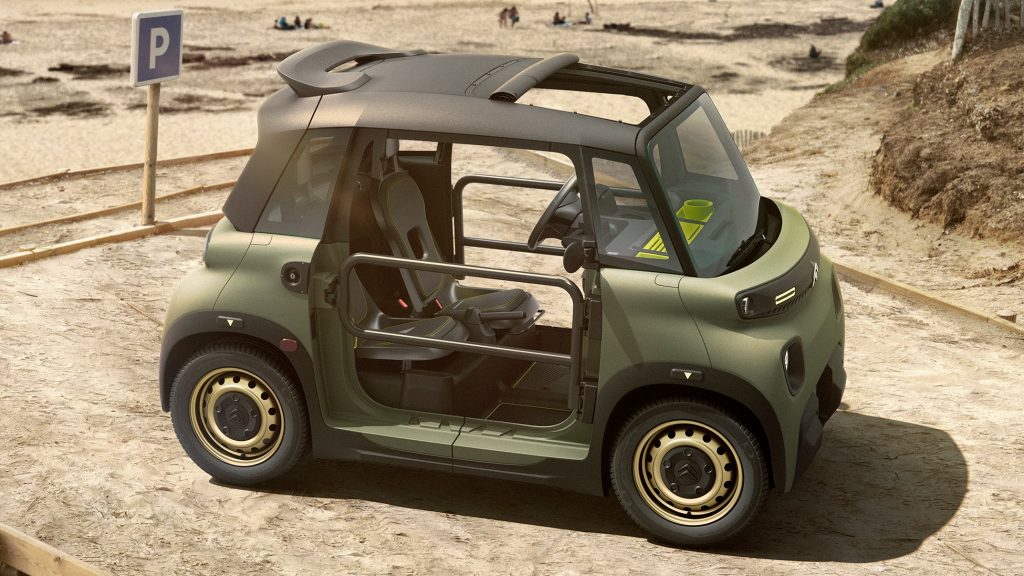
What does this new segment offer?
The essential to drive two people from A to B. The seats are comfortable for short trips. Cargo room is ok for grocery runs and similar errands. The small screen behind the wheel shows the car’s vital signs. There is no soundproofing, but using an electric motor weakens the need for that. Speaking of the devil, while it is not exactly strong, it keeps up with city traffic with no effort. And visual customization is a strong suit.
Since nothing is perfect, we can also observe cost-cutting measures. But carmakers have turned them into an attraction of its own. In Mobilize cars, front and rear bumper are the same part. Its doors swivel to the front to save space in parking spots. And the cargo version replaces the rear half of its cabin with a box. The Citroën and the Opel, in turn, have the items mentioned above and use fabric loops as door handles.
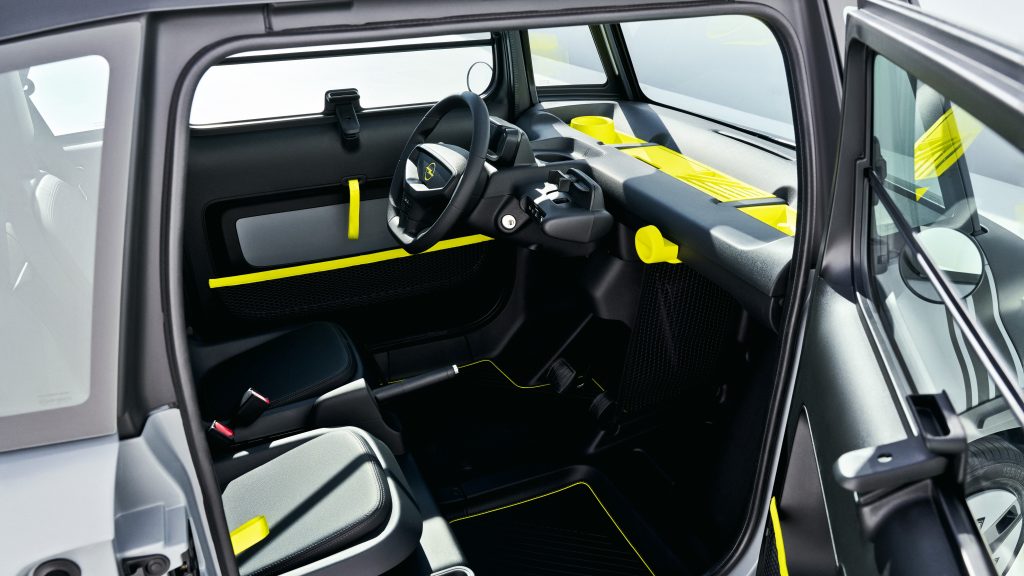
Are all heavy quadricycles like that?
Not at all. Official information is still scarce, but we can expect the Fiat Topolino to create a slightly fancier niche. It exchanges that image of a futuristic pod for the charm of retro styling just like the Microlino car. In this niche, heavy quadricycles offer more amenities especially in terms of comfort and design. They are still small and urban, but trade some of that cost efficiency for a premium image within their category.
Subdividing like that is the natural process of any product segment in expansion. However, if we compare this one with regular cars, we can say heavy quadricycles are not likely to get performance versions. There would be people to buy them, sure, but the issue is that they would break those technical limits. Adding luxury items would make them too expensive, but since that increases profit margins, we never know…
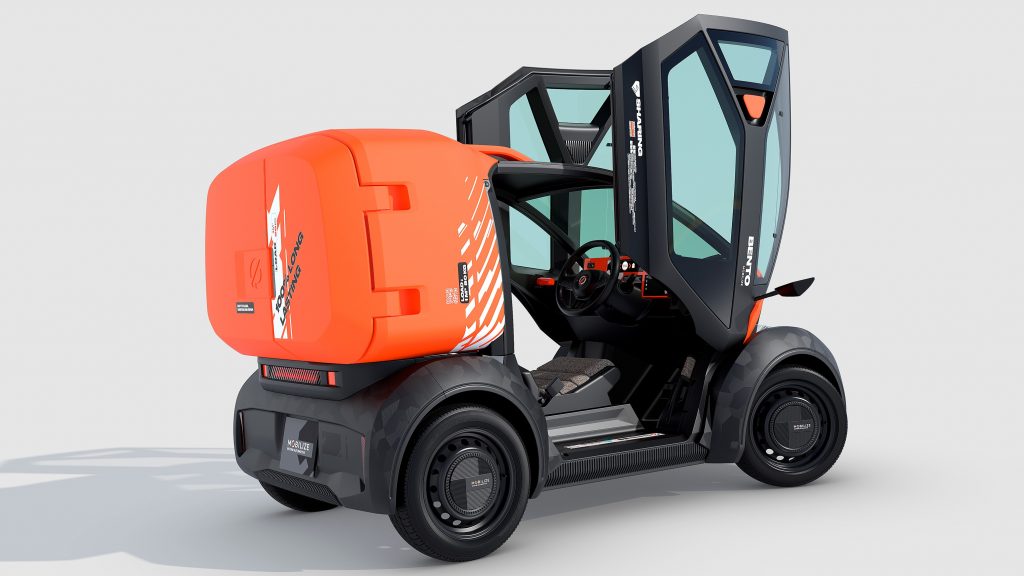
Are they the future of mobility?
Nah, they will not go that far. From a rational point of view, many people will always need larger vehicles. And from an emotional one, we all enjoy luxury or, at least, comfort. We can expect heavy quadricycles to become ubiquitous in big cities, sure, but as a counterpart to typical cars. They have a lot of potential for delivering small items, running personal errands, doing work commute, and even low-cost ride sharing.
If anything, heavy quadricycles are bound to replace superminis. They have the same target audience, but the latter has been stifled by tougher regulations and consumer standards as we mentioned. Once people realize they can have most tasks done by a cheaper vehicle that is also easier to park, making the change will be a matter of time. Especially now that some automakers are starting to support that themselves.

As we can see, heavy quadricycles went from utilitarian role and secondary presence to helping big cities manage traffic. They became better than ever in a new way; instead of trying to emulate a car, they have embraced the fact that they are a different type of vehicle. Now that they are getting popular, especially in major cities, would you consider buying one? Would it be your only vehicle or just a secondary one?
You may also like
After the initial success, Renault has expanded the Twizy project. It is now part of a standalone brand, Mobilize, which focuses on new solutions for big cities. Check it out!
Danillo Almeida has explored his passion for cars in two distinct ways. The first one is his graduation course in Mechanical Engineering, which will hopefully lead to a job position in the field. The other one is expressing his knowledge and opinions on the matter through writing. Almeida has already contributed to blogs, stores, and websites in general writing automotive content in many formats.

